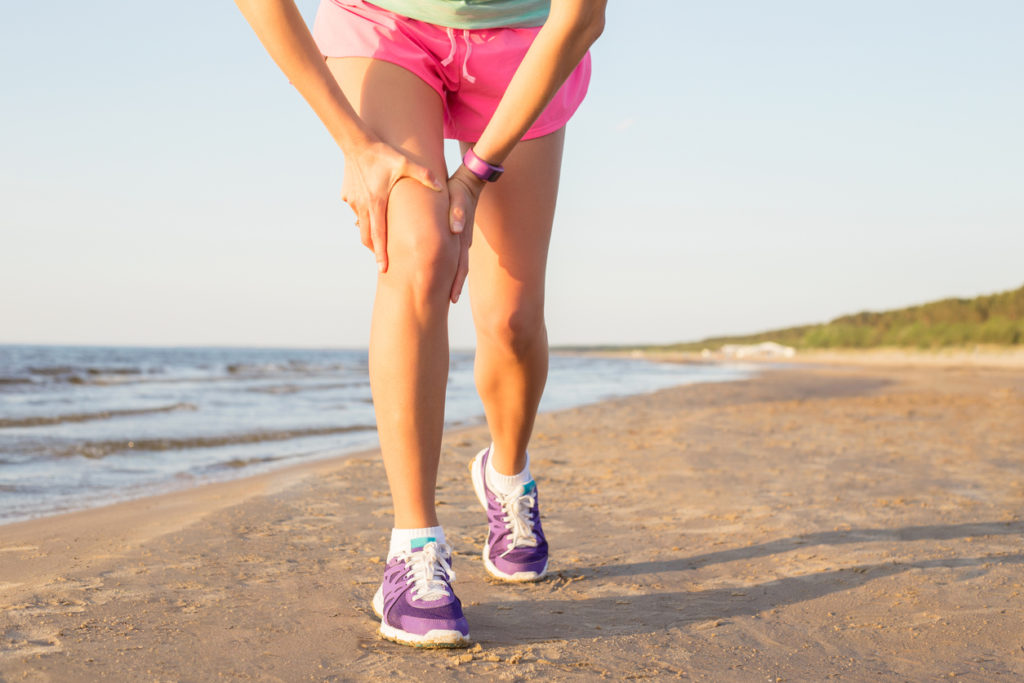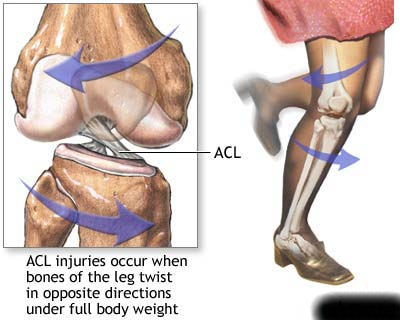
How to Keep your Knees Healthy: A.C.L. Injury Prevention with Neuromuscular Training
 I’m a big fan of healthy knees. As a personal trainer, I lead my clients through a number of exercise routines, many involving running or weight training, all of which put pressure on the knees. If knees are not warmed up before exercising, this can be problematic and lead to chronic knee issues. Hence, we always start with a warm-up.
I’m a big fan of healthy knees. As a personal trainer, I lead my clients through a number of exercise routines, many involving running or weight training, all of which put pressure on the knees. If knees are not warmed up before exercising, this can be problematic and lead to chronic knee issues. Hence, we always start with a warm-up.
This article in the New York Times, How a Warm-Up Routine Can Save Your Knees, really struck my eye, as it’s completely in line with my thinking. Rupturing an anterior cruciate ligament (A.C.L.) in the knee could truly be a nightmare—one that lasts for years. This injury often involves surgery, which takes not only a physical toll on the injured person but also a psychological one.
Warming up the knee and surrounding joints—tibia, femur—is very important. Motivated by the growing occurrence of knee injuries, I am not the only one working in recent years to develop training programs to reduce this problem with my clients.
Many researchers are finding that
neuromuscular training [uses] a series of exercises to teach athletes how to land, cut, shift directions, plant their legs, and otherwise move during play so that they are less likely to injure themselves. Studies have found that the programs can reduce the number of A.C.L. tears per season by 50 percent or more, particularly among girls, who tear their A.C.L.s at a higher rate than boys do (although, numerically, far more boys are affected).
In yoga, which is often prescribed for physical therapy healing for any injury, the knees are left out of this equation. In other words, even in yoga, it’s ok to stretch and move to the edge of any tightness and even improve circulation around injured body parts, but not with the knees! Warming up the hips first helps to protect the knees from injury and is great prevention.
Personal training programs that I use that incorporate neuromuscular training (and others) help to warm up and strengthen the knees and surrounding tissues as follows:
-> Squatting progressing to squat jumps. Toes are pointing straight ahead and knees are directly over toes.
-> Marching
-> Jumping
-> Side-to-side shuffling
-> Landing from any exercise softly with knees bent, on ball of foot
-> Back neutral, not arched
-> Hips, knees and feet are in alignment
-> Yoga hip openers (such as Pigeon Pose)
-> Stretching tight muscles surrounding knee
The best prevention for knee injuries is enhancing neuromuscular stabilization. This is done through proper exercise techniques, focusing on core, balance, and strengthening the muscles around the knee. Proper alignment is extremely important. One of the most important aspects of correcting knee imbalances is making sure your foot is striking properly. The architecture of your foot and the way it meets the ground can have an effect on your knee. (You can tell by the way your shoes are worn). If the wear is uneven on your shoes, the wear on your knees will be uneven as well. Getting your foot strong, in alignment, building your arches and keeping the feet limber are all an important part of a knee prevention program.
The most thoroughly studied neuromuscular training options are PEP (Prevent Injury, Enhance Performance), developed by Santa Monica Sports Medicine Foundation and FIFA 11 program, created by the international governing body of soccer. All programs stress that the exercises are performed accurately.
A sample video is included in the link above.
Sara
